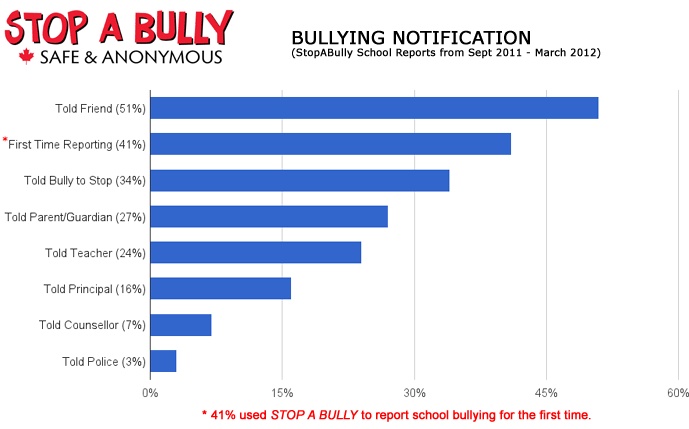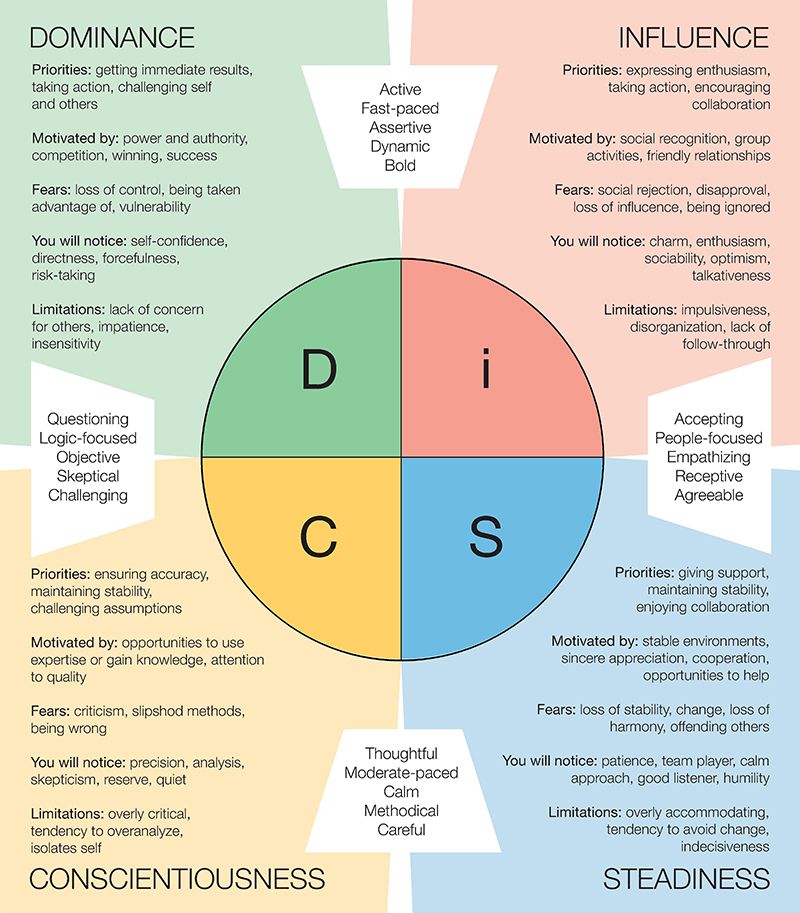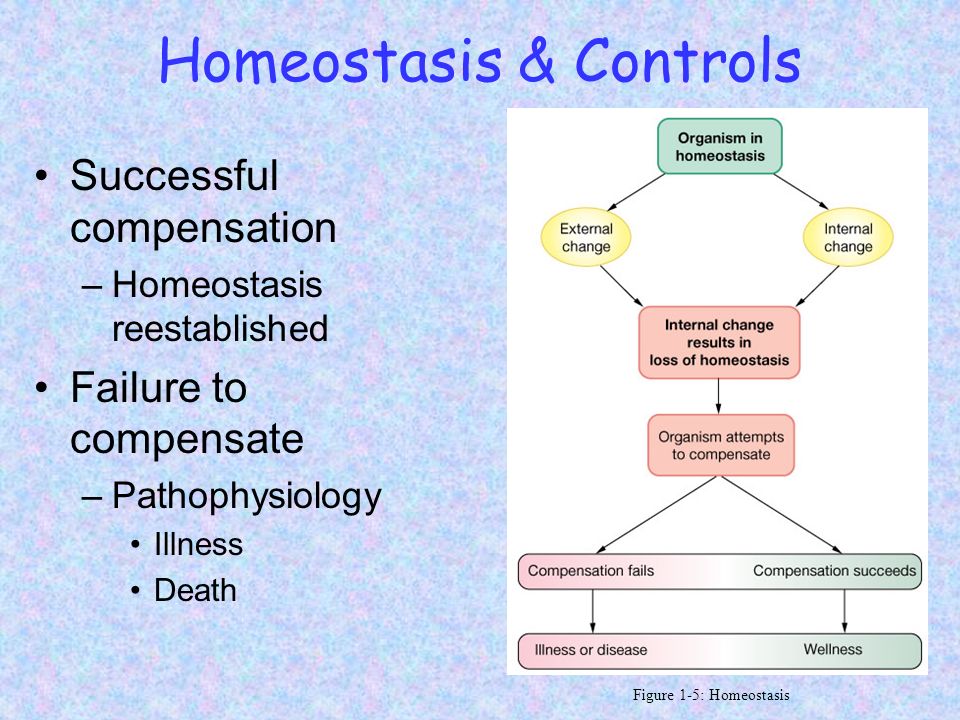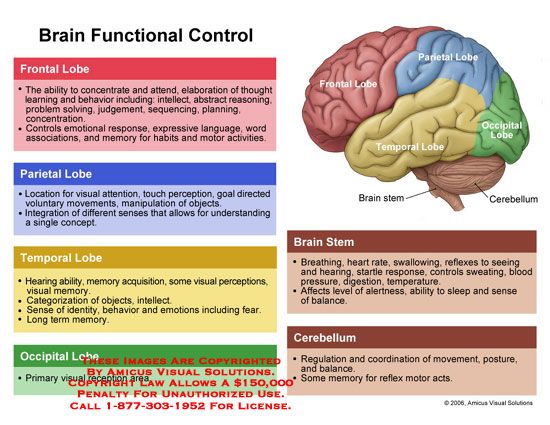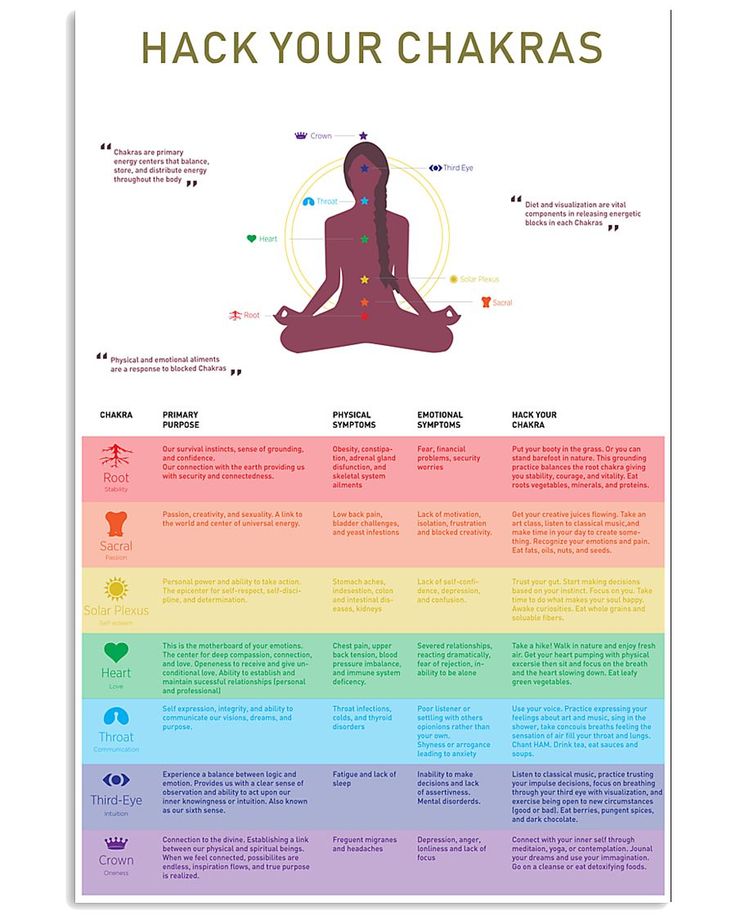Establishing boundaries with friends
5 Ways to Draw the Line Politely
Knowing how to set boundaries is one of the most essential yet overlooked social skills.
Boundaries are rooted in clear communication.
As Brene Brown says: “Clear is kind, unclear is unkind.” The more precise you can express your boundaries, the more likely your boundaries will be respected. While you may need to repeat yourself a few times, don’t feel the need to apologize or explain your boundaries.
Like an invisible fence around the perimeter of a yard, boundaries establish where your space ends, and someone else’s begins. If a dog can recognize and respect that perimeter, then so can everyone in your life.
Here’s precisely how to set boundaries that protect your mental, physical, and emotional well-being from fostering healthy relationships at work, at home, and in social circles.
What Are Healthy Boundaries?
Healthy boundaries are the limits you place around your time, emotions, body, and mental health to stay resilient, solid, and content with who you are. These empowering borders protect you from being used, drained, or manipulated by others.
You can set boundaries around:
- Emotional energy
- Time
- Personal space
- Sexuality
- Morals and ethics
- Material possessions and finances
- Social media
Boundaries can be set with:
- Family
- Friends
- Romantic relationships
- Coworkers
- Strangers
Though they aren’t as blatantly clear as a fence, wall, or “no trespassing” sign, healthy boundaries communicate to others what you will and will not tolerate. In short, boundaries empower you to take charge of your life.
↑ Table of Contents ↑
Why Do You Need Boundaries?
Personal boundaries are at the root of a fulfilled, balanced life. Without them, people can quickly lose themselves in their work, relationships, familial obligations, or service to others. They can even wind up being exploited or taken advantage of by people who do not respect them.
These borders help define what you are willing to say “yes” to and what you decide to say “no” to. They give you a sense of agency and sovereignty over your decisions.
Like an internal compass, boundaries can all start with a “gut feeling” that tells you when you have the time or energy to devote to something versus when you need to say “no.”
Good boundaries free you to live life on your terms.
↑ Table of Contents ↑
Healthy Boundaries vs. Unhealthy Boundaries
People with solid boundaries tend to have lower levels of stress and higher self-esteem because they prioritize their well-being.
On the other hand, people without boundaries may inadvertently let others take advantage of them.
They may lack self-confidence, a sense of purpose, or a clear identity to guide them through life. Counselor Dr. Dana Nelson writes, “in work or in our personal relationships, poor boundaries lead to resentment, anger, and burnout.”
People without boundaries can be easily persuaded into things they don’t want to do because they may be acting out of guilt or obligation rather than self-love.
| Signs of Healthy Boundaries | Potential Signs of Unhealthy Boundaries |
| Protect yourself from getting taken advantage of | Vulnerable to being “used” or taken advantage of |
| Own your time | Over-commit your time to others and leave little time for yourself |
| High self-esteem and self-respect | Lower self-esteem and critical inner dialogue |
| Prioritize time for yourself | Give a lot of their time to other people |
| You only take on responsibilities you can handle; you don’t overcommit yourself | Feeling exhausted or burnt out by overwhelming commitments and responsibilities |
| Authentically say “no” if you don’t have the energy or capacity to do something | Have a hard time saying “no” |
| Set limits for others without feeling bad | Feel guilty for expressing boundaries |
| Strong sense of identity and direction | Change yourself to fit in with different people |
| Take care of your own problems and understand that you cannot heal other people’s issues for them | Take on other people’s problems as your own |
| You clearly communicate your needs and wants; you prioritize your self-care | You put other people’s needs and wants before your own |
Suppose you’re tired of living your life for other people or find yourself exhausted by all the commitments you’ve made to others. In that case, it’s time to set some boundaries and reclaim the power of your time, energy, and mental well-being.
In that case, it’s time to set some boundaries and reclaim the power of your time, energy, and mental well-being.
↑ Table of Contents ↑
5 Effective Ways to Set Healthy Boundaries
Setting boundaries comes down to communication. Communicating your needs and desires is the most vital step toward defining your limitations and living a more liberated existence.
Visualize and Name Your LimitsThe first and most important step to defining your boundaries is to make them concrete. Boundaries are often confusing and abstract because they feel invisible in our daily lives.
However, by visualizing your boundaries and writing them down, you can get much more clarity on where you want to draw the line between you and other people.
Set aside some time to reflect on the state of your life. Ask yourself:
- What is causing me unnecessary stress or discomfort?
- What do I look forward to each day versus what do I dread?
- Who or what gives me energy?
- What areas of my life do I feel exhausted by?
- What makes me feel safe, supported, and valued?
Draw a large circle on a blank piece of paper. Inside the circle, write everything that makes you feel safe and stress-free.
Inside the circle, write everything that makes you feel safe and stress-free.
For example:
- A daily routine
- Words of affirmation from your partner
- Hugs from your loved ones
- Leaving work stress in the office
- Clear communication from your loved ones
- Freedom to decide how you spend your free time
- Saying “no” to energy vampires
- Autonomy over your body
On the outside of the circle, write down anything that causes you discomfort, pain, annoyance, or emotional exhaustion. These are the people or situations pushing the limits of your boundaries.
For example:
- Your mom telling you what to do with your life
- Working after-hours on projects instead of prioritizing your self-care
- Worrying about what certain people think about you
- Your cousin asking to borrow money
- Your coworker constantly dumping her relationship problems on you at lunch
- Your roommate eating your food from the fridge
- Your boyfriend/girlfriend controlling who you talk to or hang out with
- Strange people at the bar touching you without asking
- Acquaintances asking deep or intimate questions about your life
This circle represents a visible manifestation of your limits. It’s time to take anything outside the circle and determine how you can define a boundary that will prevent or eliminate those issues in the future.
It’s time to take anything outside the circle and determine how you can define a boundary that will prevent or eliminate those issues in the future.
↑ Table of Contents ↑
Openly Communicate Your BoundariesOne of the biggest mistakes people make is setting boundaries in their minds but not openly sharing them with the people in their life. Sometimes people assume that you should know their boundaries. But if they didn’t clearly communicate where they’ve drawn the line, how will you know when you’ve overstepped it?
This can seem daunting and scary, but it can feel like a significant relief once you get it out of the way. As social psychology researcher Brene Brown says, “clear is kind, unclear is unkind.” Once you know your boundaries, you have to communicate them.
Take a deep breath, gather your resolve, and assertively express your needs in a kind, direct way. Here’s how:
How to Clearly Communicate Boundaries| Time Boundary | “I can only stay for an hour” or “If you’re going to be late, please let me know ahead of time.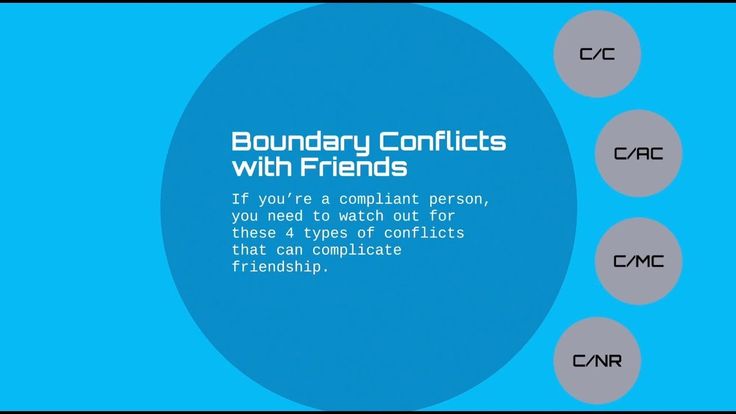 ” ” |
| Energy Boundary | “I don’t have the energy to help you with [their request] right now, but maybe [this resource] can help.” |
| Emotional Dumping | “I understand you’re having a hard time and I want to be there for you, but I don’t have the emotional capacity to listen right now.” |
| Personal Space Boundary | “It makes me feel uncomfortable when you [touch or action]. If you can’t respect my space, I’ll have to leave.” |
| Conversational Boundary | “This is not a topic I’m willing to discuss right now.” |
| Comment Boundary | “I don’t find those types of comments funny.” |
| Mental Boundary | “I understand we see things differently and I respect your opinion, but please don’t force it on me.” |
| Material Boundary | “Please ask me first before borrowing my [possession]” or “I would appreciate it if you didn’t touch my [material thing].” |
| Social Media Boundary | “I don’t feel comfortable with you posting that on Instagram. ” ” |
Fortunately, once someone is aware of your boundaries, most people will respect them and apologize if they accidentally cross the line. Without clear communication, the lines become blurred. You can quickly find yourself crossing into the more dangerous territory of getting burned out, taken advantage of, or even neglecting your own needs.
The more precise and direct you can communicate your boundaries, the easier it will be to uphold them. Boundaries are like the “rules” of a relationship. When they’re displayed for all parties involved, it is much easier to respect them.
↑ Table of Contents ↑
Reiterate and Uphold Your BoundariesLike the invisible perimeter fence around a yard protects a dog from running into the street, boundaries protect you from overextending your mental and emotional well-being.
But the dog has to be trained not to cross that line. They have to understand where their yard begins and ends.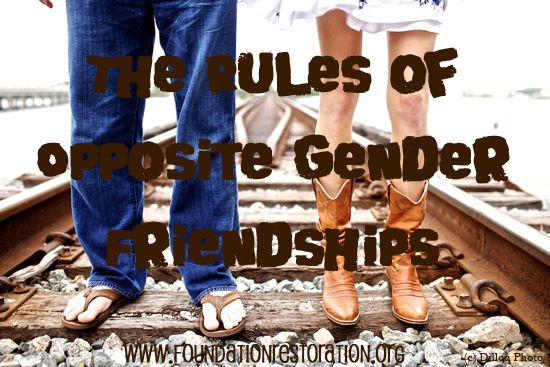 It takes time, repetition, and patience.
It takes time, repetition, and patience.
The same is true of human boundaries. Not everyone will understand or respect your boundaries the first time. It’s essential to stand firm in your decision while kindly reminding them of your needs when necessary.
A dog will get confused if the yard ends at the bushes one day but extends to the sidewalk the next. If someone doesn’t initially respect your boundary, remind them, but stay consistent with your original decision.
Pro Tip: Avoid shifting your boundaries for somebody else’s comfort. If you said, “I don’t feel comfortable with you contacting me about work after hours,” you probably don’t want to send the message that “sometimes it’s OK for you to text me late at night.” While it may be awkward or uncomfortable initially, a person who truly wants to be in your life will respect your decision.
↑ Table of Contents ↑
Don’t Be Afraid to Say NoHave you ever met someone who seemed to say “yes” to everything? People afraid to say “no” often end up with an overflowing plate of duties and responsibilities that they can’t seem to keep up with. They tend to forgo their self-care as they frantically try to meet the demands of all the people and things they said “yes” to.
They tend to forgo their self-care as they frantically try to meet the demands of all the people and things they said “yes” to.
“No” is a powerful word. It sounds strikingly similar in dozens of languages and can be recognized by simple gestures or facial expressions.
Yet so many people in the modern-day have been programmed to feel guilty for their “no’s.” In reality, to say “no” is to draw a line in the sand. It is an expression of courage, self-love, and sovereignty over your daily decisions.
Remember that every “yes” and “no” shapes your reality. You have the power to choose how you will spend your time and energy. If something doesn’t feel right in your gut, you probably shouldn’t do it. The word “no” is essential for healthy boundaries.
If you need help saying “no” more often, check out our 6 Effective Tips to Politely Say No.
Action Tip: Saying “no” doesn’t have to be rude, but it also doesn’t require an apology or an explanation.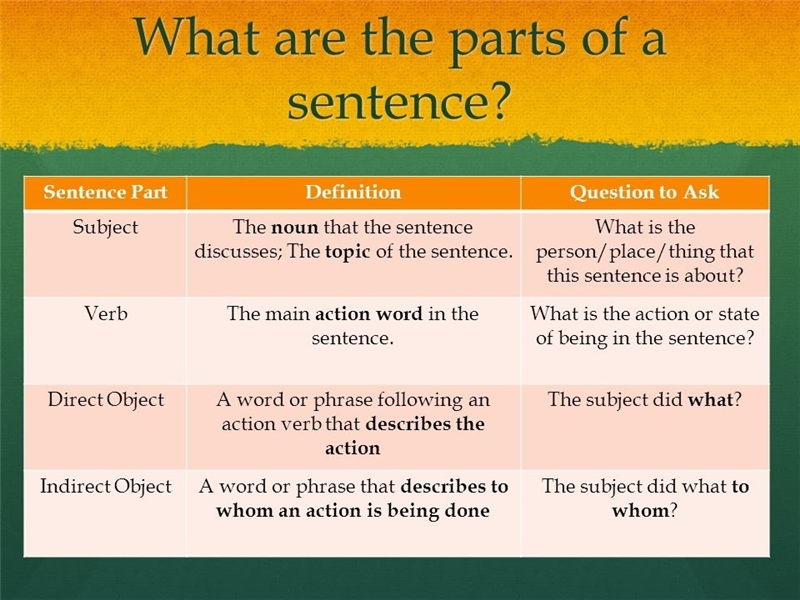 Notice where in your life you say “I’m sorry, I can’t” or “maybe, let me get back to you” when you just mean “no.” Pay attention to how you can shift these simple conversations to more clearly draw a boundary instead of leaving another person waiting for a clear answer. The clarity of your communication will ultimately benefit all parties involved.
Notice where in your life you say “I’m sorry, I can’t” or “maybe, let me get back to you” when you just mean “no.” Pay attention to how you can shift these simple conversations to more clearly draw a boundary instead of leaving another person waiting for a clear answer. The clarity of your communication will ultimately benefit all parties involved.
↑ Table of Contents ↑
Take Time for YourselfAmidst our fast-moving world, self-care can feel selfish or even frivolous. But the science of self-care is clear: taking alone time for yourself is linked to more confidence, greater creativity, more emotional intelligence, and more emotional stability in challenging situations. It can even help prevent burnout.
Action Tip: For the next month, set aside a solid 2-hour block of time on your calendar each week specifically for “me time.” Let your close family and friends know that you won’t be available during this time. Whether you’re cooking a healthy meal for yourself, getting outside, taking a rest day, hitting the yoga studio, or lounging on the beach with a good book, creating time for yourself is crucial for healthier boundaries.
But what does self-care have to do with boundaries?
Solitude allows you to reflect on your life and your values. The time you set aside for self-care can help bring more clarity into your relationships with other people, ultimately helping you define your boundaries.
To many, this may seem selfish. Modern society’s tendency toward self-sacrifice and workaholism has led a large majority of people to dismiss their boundaries or sacrifice their well-being to please other people. Ironically, this can often have the opposite effect than they’d like.
Self-care and healthy boundaries are not selfish; they are a form of self-love that leads to deeper relationships and more fulfilling experiences.
As the saying goes: you cannot pour from an empty cup. Healthy boundaries are a way to fill your cup so that you can offer more joy and help to the world.
↑ Table of Contents ↑
Bonus: Deal With Difficult People
Whether you’re at work or dealing with a personal relationship, difficult people can make setting boundaries 10x harder. But how do you even begin to deal with them? Through rigorous testing, we found the optimal approach to dealing with difficult people:
But how do you even begin to deal with them? Through rigorous testing, we found the optimal approach to dealing with difficult people:
↑ Table of Contents ↑
How to Deal with Difficult People at Work
Do you have a difficult boss? Colleague? Client? Learn how to transform your difficult relationship.
I’ll show you my science-based approach to building a strong, productive relationship with even the most difficult people.
↑ Table of Contents ↑
How to Create Work-Life Boundaries
Research shows that blurred work-life boundaries are linked to emotional exhaustion. This is more relevant than ever amidst the massive shift to remote work-from-home scenarios. But workaholism can manifest in many other ways as well:
For example, John is a high-achieving lawyer who takes great pride in his work. However, he often stays extra late hours in his home office, compulsively checking emails and neglecting quality time with his family. He is regularly stressed and constantly thinking about new clients and cases from the moment he wakes up to when he goes to bed.
John often jokingly describes himself as a “workaholic” but inwardly associates his job with his identity. He doesn’t have any work-life boundaries, and his mental, emotional, and physical health are suffering.
Ways to Set Boundaries as a Workaholic:- Set precise work hours (such as 9 to 5 with a 1-hour lunch break)
- Follow a morning routine centered around self-care
- Avoid checking your phone while with family and friends
- Tell your coworkers or employees that you are not available during certain times
- Define a space in your home that is only for work (avoid working on your bed or from your couch)
- Delegate tasks or hire new employees to help reduce your stress levels
- Try a new hobby that is unrelated to your work
- Keep separate sets of “work clothes” and “lounge clothes” to allow you to shift between boundaries mentally
- When you close your laptop, mentally allow yourself to “clock out” for the day
Workaholism is a real problem resulting from a lack of boundaries around time and energy.
↑ Table of Contents ↑
How to Set Boundaries in a Romantic Relationship
Romantic relationships can be the most challenging area of your life to set boundaries. Despite what the movies tell us, it’s not necessarily healthy to give your whole self to somebody else. And honestly, nobody should expect you to.
Healthy boundaries are vital to healthy relationships. They define who is responsible for what, when you see each other, how you interact, and what each partner needs to feel safe and respected. Perhaps most importantly, relationship boundaries prevent codependency.
Suppose a romantic relationship takes over your life and impedes your work or your relationships with friends and family members. In that case, it may be time to step back and re-evaluate your boundaries.
The 3 most common romantic areas that are lacking in boundaries include:
↑ Table of Contents ↑
How Much Time You Spend TogetherSuppose you or your significant other tries to spend every waking hour together.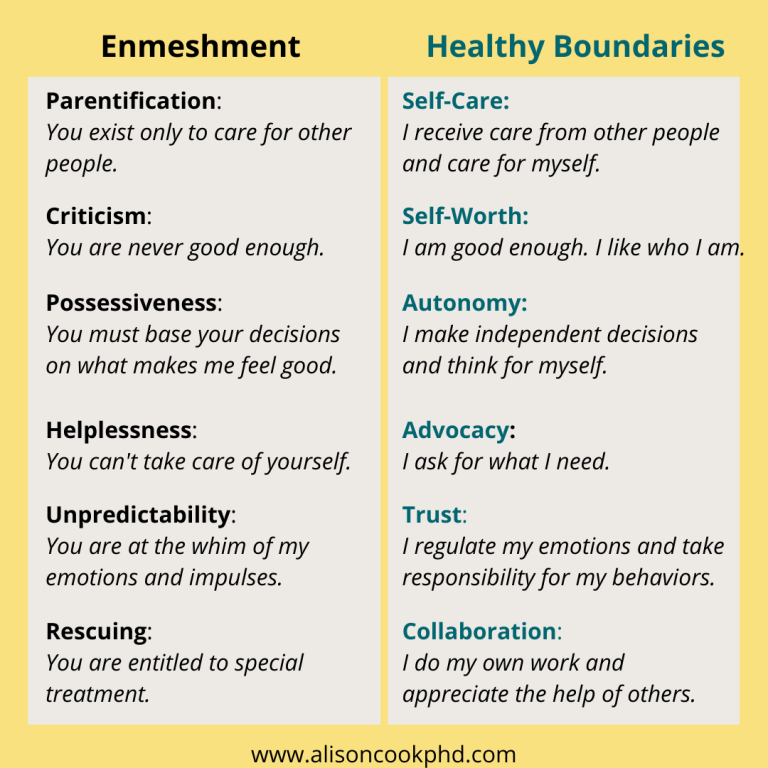 In that case, you may be lacking a boundary around your time.
In that case, you may be lacking a boundary around your time.
Relationship counselor Garrett Coan advises the “70/30” rule as a general guideline: the happiest, most harmonious marriages spend about 70% of their time together and 30% apart.
This may be more skewed toward 50/50 or 40/60 depending on the stage of your relationship, but the moral of the story is that nobody should take up all of your time. Time with a romantic partner needs to be balanced with time for friends, family, and yourself.
You can gently and lovingly express that you need more time to yourself to bring the best version of yourself into the relationship. This may manifest as a simple boundary like, “Sundays are my days for myself.”
↑ Table of Contents ↑
Setting Physical and Sexual BoundariesPhysical boundaries are essential at every stage of a relationship, especially in the heat of a new romance. It is imperative to ask for permission before kissing, hugging, or touching a romantic partner for the first time.
Moreover, there needs to be conversations around how comfortable each person is with things like publicly displaying affection, holding hands, or any other form of physical boundary.
Maintaining autonomy over your body while respecting the physical or emotional boundaries of your sexual partner is crucial to maintaining a healthy connection. This can include consent, privacy, expressing your preferences and desires, and having a mutual understanding of your partner’s physical and emotional needs.
For example, suppose a man sees a woman who has a history of sexual abuse or trauma. In that case, he can respect her sexual boundaries by regularly checking in about her comfort with different types of physical intimacy. Suppose she expresses that a particular experience was triggering for her. In that case, he needs to respect that boundary to maintain her trust.
More commonplace examples for physical boundaries include avoiding overt PDA while at a social gathering or simply asking someone before hugging them.
↑ Table of Contents ↑
Respecting Emotional BoundariesPerhaps the most complex of all, emotional boundaries are the guidelines surrounding how you and your partner express your feelings to each other.
How do you talk to each other? Do you listen intently to your partner’s needs or only focus on yourself? What topics do you avoid discussing? What tones of voice do you use? How do you apologize and resolve the situation when you get into arguments?
Examples of Emotional Boundaries:
- “Let’s not discuss that topic at tonight’s dinner.”
- “It makes me uncomfortable when you bring up [painful topic]. Can we please keep that between us?”
- “I need some time to myself to think about this situation.”
- “I will not tolerate being called names.”
- “I want to support you in this hard time, but I cannot be your emotional dumping ground. Maybe you can reach out to [a therapist, your mom, etc.].”
Pro Tip: For more amazing advice on how to (properly) argue, read on: 9 Conflict Resolution Tips to Win An Argument Like a Jedi
A Note on Emotional DumpingUnlike venting, emotional dumping is sporadically dumping traumatic feelings, thoughts, and emotions onto a partner or even a stranger. Whether you are the giver or receiver of emotional dumping, it can be a difficult boundary to navigate.
Whether you are the giver or receiver of emotional dumping, it can be a difficult boundary to navigate.
A person trying to release their emotions can express extreme vulnerability. But vulnerability can be a double-edged sword. On the one hand, vulnerability is the key to establishing deep romantic connections. But it can also lead to breaches of trust or even over-sharing.
Everyone experiences heavy emotions that they sometimes need to vent, but using your romantic partner as an emotional dumping ground can significantly strain the relationship. After all, significant others are not therapists.
Set this boundary for yourself and your partner by compassionately saying, “I want to be there for you, but I don’t think I can support you in this way.” You can also suggest a third-party professional help with the situation potentially. Remember always to show empathy but demonstrate that you feel uncomfortable being the recipient of such intense oversharing.
↑ Table of Contents ↑
How to Set Boundaries With Parents
When it comes to parental boundaries, it’s a whole different ball game.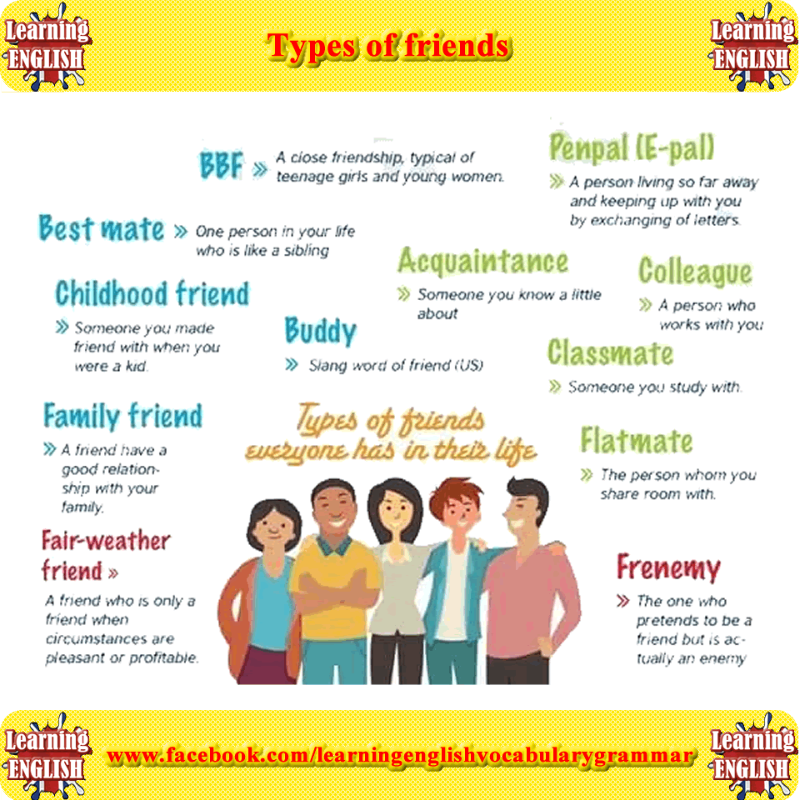 As a child, it can be incredibly confusing to have your caretaker lean on you for support or express inappropriate emotions in front of you. Fortunately, as an adult, you have more freedom and awareness to navigate boundaries with your parents.
As a child, it can be incredibly confusing to have your caretaker lean on you for support or express inappropriate emotions in front of you. Fortunately, as an adult, you have more freedom and awareness to navigate boundaries with your parents.
Either way, boundaries need to be established. Whether young, adolescent, or adult, children need to know that they have certain privacy from their parents, for example, a boundary around their parents reading their diaries or entering their room while they are changing clothes.
In the reverse scenario, children also need to know their parents’ privacy and comfort level guidelines. Parents who want to set boundaries with their children may tell their kids always to knock before entering their bedroom or to ask before using certain household items.
Young adults may need to set boundaries around their parents’ guidance for suggestions. Parents often have an idea of how they want their child to live their life, and even if it is well-meaning, it can be harmful to your sense of freedom and self-sovereignty. Adults can draw this boundary by expressing to their parents that they prefer not to receive unsolicited advice or judgment about their decisions. They will ask for help when they need it.
Adults can draw this boundary by expressing to their parents that they prefer not to receive unsolicited advice or judgment about their decisions. They will ask for help when they need it.
↑ Table of Contents ↑
How to Set Boundaries With Friends
While friendships are vital to your health and happiness, they can often be taxing when they have no bounds. Needy friends may expect a lot from you and not always give back. If you need to establish more boundaries with your friends, it all begins with the confidence to say “no.”
If you’re a people pleaser, this can be incredibly challenging because you want to make everyone happy. You may have difficulty saying “no” to someone asking for your help or attention, even if you don’t have the energy or time to do it.
There also could be some personal work involved. If you fear rejection or a need for validation, it may be harder to delineate your boundaries. But the friends worth having tend to understand and respect your priorities. Saying “no” is not a massive betrayal or letdown. It’s simply a skill you can practice to help establish more boundaries within friendships.
Saying “no” is not a massive betrayal or letdown. It’s simply a skill you can practice to help establish more boundaries within friendships.
- Set aside time specifically for yourself
- Let your friends know when they can expect a response from you (set this boundary, so people don’t get upset if you don’t respond to their text or call right away)
- Clearly express when you feel overwhelmed, ignored, or unheard.
- If you’re afraid to say “no,” start saying “I’ll get back to you” and think about things before you provide an answer
- Let your friends know that you have personal goals and dreams you are working towards
- Only offer to help friends with things that you genuinely have the capacity for. Otherwise, suggest alternative ways they can get help with the situation.
- Communicate that you are there for them, yet you are also prioritizing yourself at this time in your life.

Pro Tip: Use our 11 expert tips to stop being a people pleaser to feel more confident and authentic in your friendships.
↑ Table of Contents ↑
In Summary, 5 Steps to Set Healthy Boundaries
If you want to reclaim your energy, time, and power, setting boundaries is crucial for your growth journey.
While it may seem daunting, setting boundaries doesn’t need to be complicated:
- Define your limits (what supports you versus what detracts from your well-being)
- Openly communicate your boundaries to people in your life
- Remind people if needed (but always stick to your boundaries)
- Don’t be afraid to say “no” to things that don’t serve you
- Take time for yourself
The bounds of your life will shape your growth and relationships with people around you. You only have so much time, energy, and emotional capacity. If you don’t protect your well-being, nobody else will.
Hopefully, by establishing clear boundaries, you can find more freedom to express yourself and live a more joyful life.
If you’re seeking more confidence to layout your boundaries and fulfill your greatest potential, check out our guide on How to Be More Confident: 11 Scientific Strategies For More Confidence.
How to set boundaries with emotionally draining friends
Setting boundaries in any relationship can be tough. But how do we know when to set them, and is there a 'best way' to set boundaries with emotionally draining friends?
Sometimes, our relationships can become emotionally draining. Friendships, where we don’t experience mutual authenticity, attention, and reciprocity, can leave us feeling frustrated, mentally and emotionally drained, and, over time, can even affect our overall sense of wellbeing. Setting healthy boundaries isn’t just important in your romantic and family relationships. Clear boundaries can help create the foundations for long-lasting friendships that can grow and flourish over time.
If you find yourself feeling anxious, tired, or frustrated whenever you talk or spend time with a friend, it can be a sign that your friendship has become emotionally draining.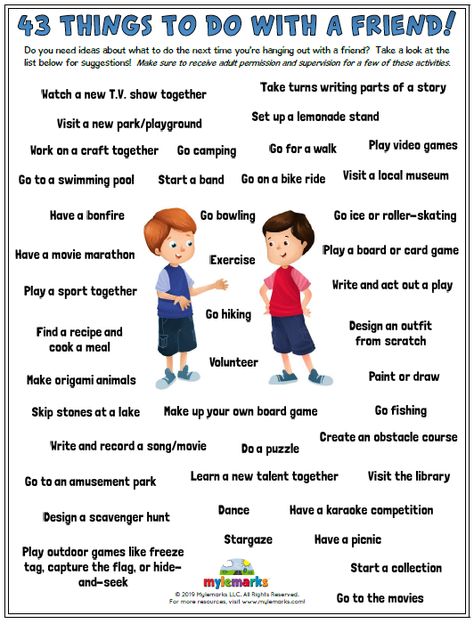 If it feels like you’re spending all or most of your time talking about their issues, like you can’t be yourself or ask for support in return, or you're less excited to spend time with them, it could be a sign that new personal boundaries are needed to get things back on track.
If it feels like you’re spending all or most of your time talking about their issues, like you can’t be yourself or ask for support in return, or you're less excited to spend time with them, it could be a sign that new personal boundaries are needed to get things back on track.
What is a boundary in a friendship?
Boundaries are a simple and clear way of letting others know what you are and aren’t ok with. Setting healthy, effective boundaries can help you to look after yourself by protecting your personal space, as well as your mental health and wellbeing.
Creating boundaries within a friendship allows you both to set out what you want and expect from each other. This doesn’t mean that you have to say yes to every request (especially if any proposed boundaries make you uncomfortable!), but it can make it feel easier to speak up when you are feeling hurt, overwhelmed, offended, or taken for granted.
In this video, Life coach and author Michelle Elman explains more about the benefits of setting boundaries.
What are examples of setting healthy boundaries between friends?
Communication is key to both setting and maintaining healthy boundaries with any friend. What that actually looks like can vary depending on different friendships, and the individuals themselves. But what are some boundaries you might set up, and what could encourage you to take action?
- You’re feeling overwhelmed. Just dealing with our own lives can feel overwhelming. Family issues, work deadlines, financial worries - whatever the cause, you may feel like you’ve got enough to deal with, and don’t have the headspace to take on someone else’s problems right now.
 Prioritising your own needs is important - and a true friend will understand if you let them know that you’re dealing with too much to give them the time and/or attention they need right now. This kind of temporary boundary can help them to understand that you would usually be there for them, but right now isn’t the best time.
Prioritising your own needs is important - and a true friend will understand if you let them know that you’re dealing with too much to give them the time and/or attention they need right now. This kind of temporary boundary can help them to understand that you would usually be there for them, but right now isn’t the best time. - Things are feeling unbalanced. Sometimes, our friendships can become unbalanced. If it feels like your friend is always coming to you with problems or when they are feeling down, but you don’t feel that same level of support or ability to go to them, it can be a sign that something needs to change. Setting boundaries around what you expect from the relationship (e.g, you would like to hear from them about good news as well as bad, or that you’d like to feel supported and that they have time for you when you’re struggling too) can help.
- There are issues you feel uncomfortable talking about.
 Many of us have dealbreaker issues that we won’t compromise on or discuss. But sometimes, we still want to keep our friendships despite our differing views on big issues. If you find yourself feeling frustrated, exhausted, or uncomfortable talking about certain things with a friend (e.g. politics, climate change, or activism), it’s ok to set a boundary to make certain topics off-limits, or agree that you will only talk about them when you are both comfortable doing so.
Many of us have dealbreaker issues that we won’t compromise on or discuss. But sometimes, we still want to keep our friendships despite our differing views on big issues. If you find yourself feeling frustrated, exhausted, or uncomfortable talking about certain things with a friend (e.g. politics, climate change, or activism), it’s ok to set a boundary to make certain topics off-limits, or agree that you will only talk about them when you are both comfortable doing so.
What is the best way to set boundaries?
There are many different ways you can set (and keep) boundaries. It’s important to take time out to really consider what you need, what you want, and how you want to communicate these needs and wants in a clear and meaningful way.
It can be helpful to:
- Take a step back. Taking a step back can help you to assess how you are feeling right now. Are you uncomfortable, resentful, hurt, or angry? What could be causing you to feel this way? Were these feelings caused by a one-off event or a pattern of behaviour that is harming how you view your friendship? Understanding what you are feeling and why can help you to identify unspoken boundaries you may have already set but not shared.

- Be direct. While it’s not always necessary to spell out some of your boundaries (for example, it’s perfectly reasonable to expect friends to not show up unannounced in the early hours of the morning outside of an emergency), if you feel like your friendship is deteriorating, it can be a sign that it’s time to address things head-on.
- Be honest with yourself. It’s easy to get caught up in what others are doing and how it makes us feel. But have you taken time to focus on yourself, and to be aware of how you may have changed? Are there any boundaries you previously held but have let fall by the wayside? Have you changed or started doing anything differently? Why are you feeling stressed or resentful now? Becoming more self-aware doesn’t mean you are taking on the blame - but it does mean you are recognising the situation, figuring out what you do and do not have control over, and making a plan about how you can tackle things moving forward.

- Accept your feelings. It’s ok to feel how you are feeling. Giving yourself time and space to feel this way, to figure out exactly what these feelings are and what they mean, is both healthy and natural. It’s normal to be afraid or worried about things changing in any kind of relationship. You might feel guilty that you are trying to take a step back, or frustrated that you can’t take on everything others expect of you. Acknowledging these feelings is the first step towards working through them and ensuring you are being realistic and fair with your expectations of yourself.
- Make self-care your priority. You can’t pour from an empty cup. When we don’t put our needs first, we can risk letting our wellbeing fall to the wayside. Practising self-care means you recognise and honour your needs, wants, and feelings. When you create a sustainable self-care routine, you can give yourself a much-needed boost of energy and a sense of calm, and help to foster a more positive outlook on life.
 Looking after yourself helps you to build resilience, and feel more ready and able to face life’s unexpected challenges – and to support those that you love and care for.
Looking after yourself helps you to build resilience, and feel more ready and able to face life’s unexpected challenges – and to support those that you love and care for. - Stay strong. If setting boundaries feels tough, find support. Talking with other friends and family members can help you to work through why you may be struggling, and to identify other ways you can address issues with your emotionally draining friend. Once you have put boundaries in place, it’s important to stick with them. When we fail to enforce our own boundaries, it can mean that our friends don’t realise how having these boundaries pushed or broken makes us feel. It can help to start out small. Once you feel more comfortable and confident in speaking up and defending your boundaries, you can begin setting more.
What are the types of boundaries and how do you set emotional boundaries with friends?
Setting up boundaries with friends can feel awkward at first.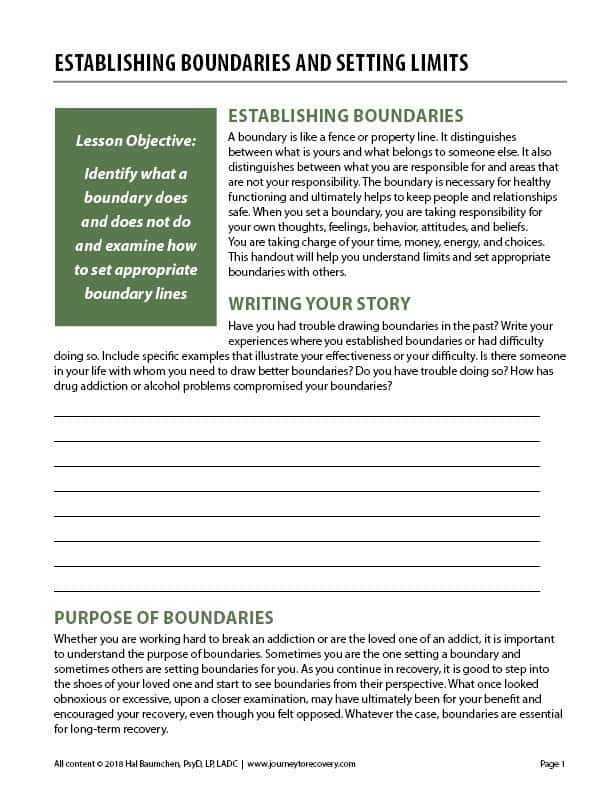 It’s important to remember that if you’re at the stage where you’re looking to set up new boundaries, it means that something needs to change before your friendship starts to feel strained or damaged.
It’s important to remember that if you’re at the stage where you’re looking to set up new boundaries, it means that something needs to change before your friendship starts to feel strained or damaged.
Boundaries aren’t necessarily a sign that something is wrong. If anything, they are a sign that you value a friendship enough that you want to set expectations to allow for a long-lasting, healthy, meaningful friendship that can flourish and grow over time.
Some different types of boundaries you might consider setting can include:
- Emotional boundaries. If you’re overwhelmed or at capacity with your own feelings, emotions, or challenges, you may not have the time or bandwidth to help others with theirs. Setting emotional boundaries can help you to let them know that you care, but now isn’t a good time, or that something is a tough topic for you, and you would rather talk about something else.
- Intellectual boundaries.
 Friendships are built on mutual respect and trust. While we shouldn’t be dismissive of friends’ thoughts or views, it can be healthy to set boundaries around conversations that you know may be unhelpful for your headspace or wellbeing.
Friendships are built on mutual respect and trust. While we shouldn’t be dismissive of friends’ thoughts or views, it can be healthy to set boundaries around conversations that you know may be unhelpful for your headspace or wellbeing. - Material boundaries. If your friend borrows things and is careless with them, frequently borrows money without paying you back, or uses your things without asking, you may wish to set new material-based boundaries. This could mean saying you would rather not share your food, that you are happy to lend them something but need it back by a specific time, or saying no to lending them money while offering to support them in other ways.
- Physical boundaries. Not everyone feels comfortable with the same level of physical touch. It’s ok to say you aren’t comfortable with unexpected hugs or touching or to set areas of your home as off-limits.

- Time boundaries. If your friend is always late, gets upset when you are busy, or keeps cancelling on you, setting time-related boundaries can help you both to feel more valued and less frustrated.
Once you know what type(s) of boundaries you want or need to set, figuring out how to set these boundaries can feel tough. Being clear with your friend about how much you value your friendship can be a great way to open the conversation in a non-confrontational way. Speak openly, respectfully and clearly about how you are feeling and why you think boundaries may be helpful. Ensure you ask them what they think, how they feel, and if there may be any boundaries they would find helpful, too.
Remember: it’s ok to compromise! Being willing to compromise and meet in the middle can be a healthy way of maintaining your friendship while respecting differing boundaries. Sometimes, our different communication styles, values or beliefs may make things tricky, but by showing we are willing to compromise and meet in the middle, we can still show how much we value each other and want the friendship to work out.
What do I do if my friend doesn’t respect my boundaries?
Boundaries help us to protect ourselves and our wellbeing. A healthy friendship will typically strengthen and grow when both parties feel like their boundaries are being heard, understood, and respected. But not everyone is willing or able to respect our boundaries - no matter how hard we try and reinforce them.
You are responsible for looking after and protecting yourself. Ask yourself: if a loved one had a friend who constantly forgets, disrespects, or ignores their boundaries, would you think it was ok? Or would you encourage them to reinforce their boundaries, have an open and frank conversation, or even reconsider if that friendship is really giving back and offering them as much as they are putting into it?
It’s ok to walk away from unhealthy relationships. This can mean taking a break, limiting contact, or even ending a friendship. You don’t have to make yourself uncomfortable or push yourself beyond your limits to accommodate other people - no matter how long they have been your friend. Your time, space, and energy are yours, no one else’s. And it’s up to you who you decide to share them with.
Your time, space, and energy are yours, no one else’s. And it’s up to you who you decide to share them with.
Getting help for setting boundaries
Setting boundaries doesn’t come naturally to everyone. This can be due to any number of underlying reasons. You may be a people pleaser who struggles not to let others down. Maybe you’re worried that if you don’t always say yes, you may lose your friendships. Or perhaps you’re worried that you won’t recognise who you are if you aren’t doing things for others.
Working with a therapist can help you to better understand yourself, why you are struggling, and how you can make changes to put yourself first. Working with a counsellor doesn’t mean that they will give you all of the answers, but it does create a safe space for you to speak without fear of judgement and to work through what is worrying you.
As therapist Lauren Street (MBACK; MNCS Accred) explains, “Putting boundaries in place doesn’t make you selfish - it means you’re taking an opportunity to put yourself first and do what’s right for you. You can’t emotionally give out what you don’t have. It can be challenging, but the reward can be so beneficial to people in your life and, most importantly, for you.”
You can’t emotionally give out what you don’t have. It can be challenging, but the reward can be so beneficial to people in your life and, most importantly, for you.”
Ready to speak with a professional? Connect with a professional therapist or counsellor using the Counselling Directory.
Set Healthy Boundaries: 10 Steps
127,130
Man among men Practices how to
What does it look like? For example, you are talking on Skype with a friend at midnight, because it is more convenient for her. Or give a ride to a colleague who, as soon as he sits down, habitually lights up in your car.
You and your husband are going on vacation to a place where it rains and where pike is excellently caught. You don't even realize that your boundaries are being crossed even when they are taunting you or joking about your size.
Some of us are reluctant to set clear boundaries because we believe that doing so can offend those around us.
Others set them up in such a way as to stake out part of someone else's territory.
But remember that there is that part of your "I" that needs to be protected from any encroachment, something that belongs only to you. Your emotional health, what you believe in, what you won't let outsiders touch.
What are these boundaries and why are they needed? Most simply they are defined by the words "my business" - "your business". By setting boundaries, we first of all decide for ourselves what behavior towards us will be reasonable and safe for us, will not destroy us as a person.
They are not designed to get someone to do something. We set them for ourselves, and in this way we show that we are responsible for our own destiny, for what is permissible and what is unacceptable to do in relation to us. But for this you need to know exactly who we are and what our true "I" is.
We understand where we end and another begins. We are responsible for ourselves and only ourselves.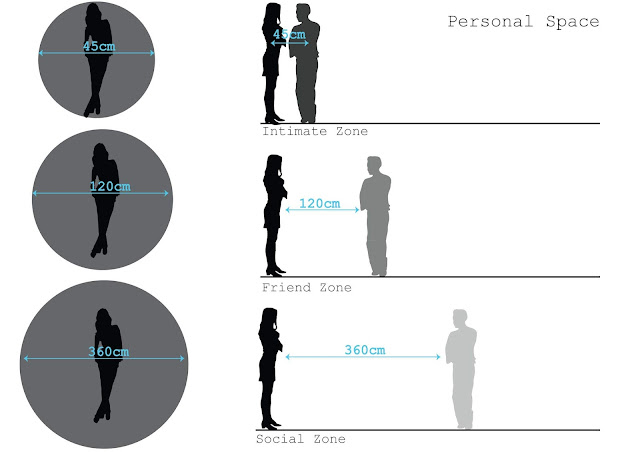 This is where every healthy person starts.
This is where every healthy person starts.
It is almost impossible to manipulate a person who is clearly aware of his personal boundaries and has clearly marked them for others.
Determine if these boundaries are violated:
Physical boundaries
The very first, basic boundary for us is our skin. Important concepts that define your physical boundaries are physical space and personal space. Ask yourself the following questions to see if your boundaries are being violated by others.
Who is allowed and who is not allowed to touch you and how? What do you consider only your personal space that needs to be protected?
Do you have a place in your house where you can be alone?
Sexual Limits
Find your personal level when sexual activities and touching are comfortable for you. Only you determine what is acceptable and what is not, where, when and with whom. Stick to these boundaries and don't be silent when they are violated.
Material boundaries
What do you think is permissible and what are not permissible in relation to your property?
What can you give as a gift? Borrow?
How much money do you allow yourself to borrow? Do you allow strangers to use your car, clothes, apartment? It is only you who determines this, and for different people these boundaries can be very different.
Who enters your house? Who wouldn't you like to see?
The same goes for your children's friends: which rooms in your house are not open to guests?
Do guests take off their shoes? Do they eat and smoke in your car? All these are things that should be determined only by you as the owner of the house.
Emotional boundaries
You are responsible for your feelings, but others are also responsible for their feelings. Don't let anyone take it out on you or make comments about your weight, appearance, or age. And don't do it yourself. Healthy emotional boundaries keep you from blaming or taking someone else's accusations personally.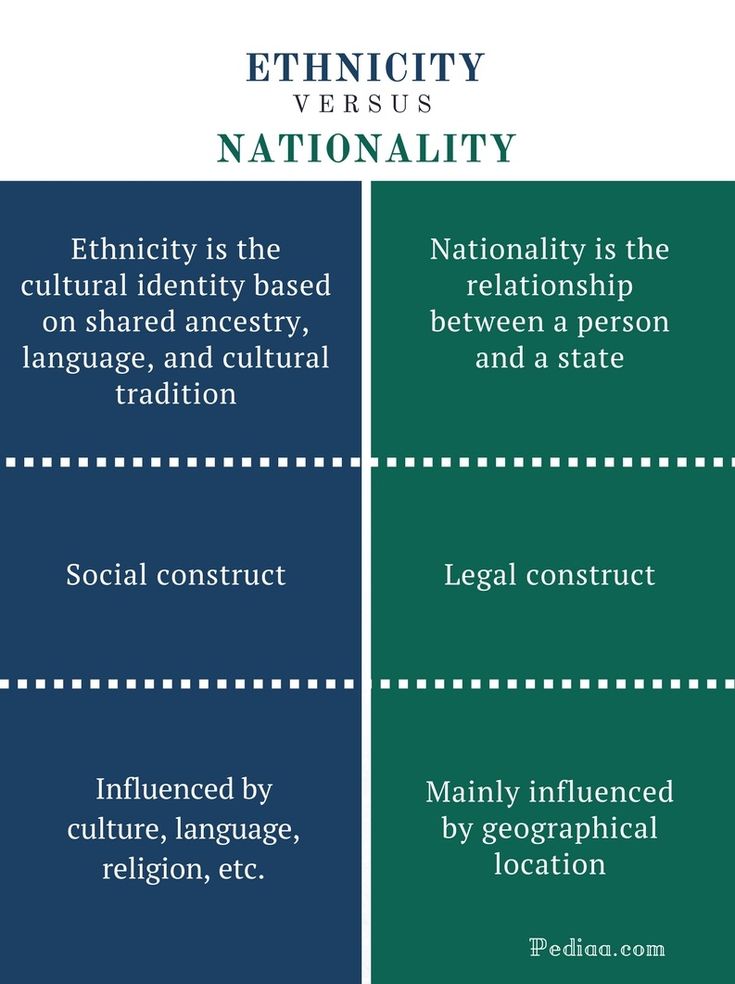 And also feel guilty for someone's decisions or problems and give unsolicited advice.
And also feel guilty for someone's decisions or problems and give unsolicited advice.
A border no one knows about is not a border
If you make excuses and argue or defend yourself, this is also an indicator of weak emotional boundaries. “I’m sad, I’m angry, I’m scared…” Are you able to respond to these feelings of yours immediately and calmly accept them? If you ignore them when they first appear, if you think you shouldn't have these feelings at all, your body will turn up the volume until you hear them.
Spiritual boundaries
What is important to you in life? What do you believe? As in all the previous ones, these boundaries must be felt and realized when they are crossed.
Intellectual boundaries
Your values, opinions, thoughts. They are only yours. And each individual decides what he wants to share with others, and what to leave unsaid. What do you believe? Can you listen with an open heart to those who express a different opinion, and at the same time without prejudice, without compromising your core beliefs?
There are two more things that belong only to you.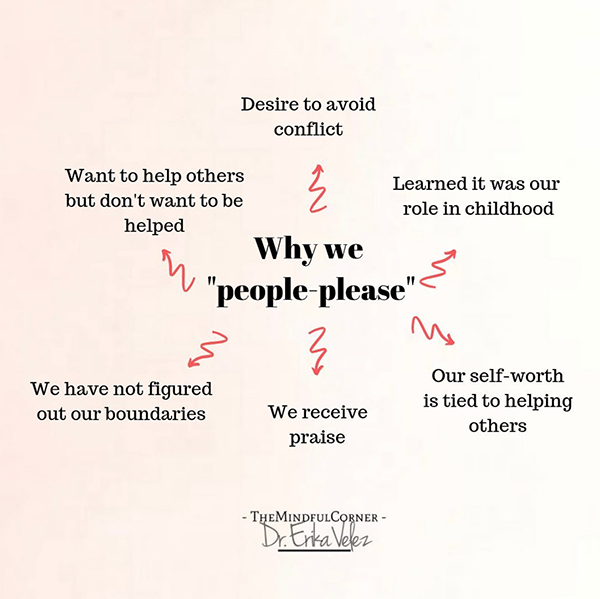 These are your words and your time.
These are your words and your time.
Remember: "no" is the most basic boundary and a complete, extended sentence.
Healthy boundaries are not:
- set for us by someone else;
- hurt us;
- are rigid and immovable;
- invade our personality.
10 laws of healthy boundaries
1. All actions have consequences. If someone in your life showed violence, cruelty, selfishness towards you, did you set boundaries? Or does it all happen over and over again with no consequences for them?
2. The law of responsibility. We answer to each other, but not to each other. This means not encouraging or provoking anyone's infantile behavior.
3. Power has limits. We have power over some things, but we do not have the power to change other people. We only have the power to change our own lives.
4. The law of respect. If we want others to respect our boundaries, we must respect theirs too.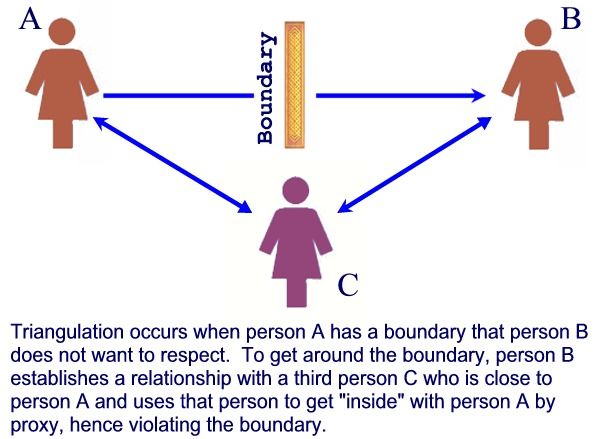
5. Freedom of choice. We should be free to say "no" or say "yes" with a pure heart. You can’t love a person just because you feel sorry for him and he leaves you no other choice.
6. We need to evaluate the pain of setting our boundaries for others . Do our boundaries cause pain that will then lead to healing and growth? Or the pain that only hurts them?
7. Law of proactivity. We take active steps to solve problems based on our values and desires. Proactive people defend their freedom and express disagreement, but without raising an emotional storm.
8. The law of envy. We will never get what we want if we set our limits based on what others have. An envious person simply does not see his boundaries based on the choices that he has.
9. Law of activity . Don't wait for others to make the first move.
10. You need to communicate your boundaries. A border that no one knows about is not a border. We must make it very clear to the other what we want and what we do not want, what we will tolerate and what we will not. We must also make it clear that every violation of boundaries has consequences.
A border that no one knows about is not a border. We must make it very clear to the other what we want and what we do not want, what we will tolerate and what we will not. We must also make it clear that every violation of boundaries has consequences.
Text: Maria Malygina Photo Source: Getty Images
New on the site
“After my husband died from cancer, I started drinking. How to return to normal life?
Narcissist and career: how excessive self-admiration harms work
Scientific approach and environmental friendliness: what are the advantages of Evalar Laboratory complexes
"The road to the unconscious": Sigmund Freud's 5 key ideas about dreams - know yourself
12 questions for a doctor that will help prevent or detect cancer
“All my life I feel worthless because of my mother's dislike”
“My friend criticizes my gifts and actions. How to tactfully hint to her that this is unpleasant for me?
Are you an honest person? If so, this is how others see you
How to set and maintain personal boundaries
When was the last time you said no? Did you feel remorse, guilt, or deep regret that you could upset someone with your rejection? If yes, you are not alone - the vast majority of people experience similar emotions in such situations.
 To stop feeling guilty at those moments when we make a choice in favor of ourselves, and not others, we re-read the book by Jenny Miller and Victoria Lambert “Personal Boundaries. How to install and defend them.
To stop feeling guilty at those moments when we make a choice in favor of ourselves, and not others, we re-read the book by Jenny Miller and Victoria Lambert “Personal Boundaries. How to install and defend them.
Victoria Lambert, Jenny Miller
Mann, Ivanov & Ferber, 2018
Why personal boundaries are needed our actions and words. However, the main purpose of personal boundaries is to defend your interests and prevent unnecessary discomfort. Moreover, this applies not only to annoying people who strive to get into your soul, but also to various limiting beliefs, living conditions or habits. Healthy boundaries are needed in absolutely everything - and first of all, in order to feel good.
However, sometimes in an attempt to protect ourselves, we may overreact to stimuli or get lost when we need to, on the contrary, resist the onslaught
In such situations, instead of protecting ourselves, we think about whether we have offended another whether they reacted correctly, how they formulated the thought, and further down the list . .. But any violation of boundaries is not only a conflict between you and the outside world, but also an intrapersonal mini-quarrel. The body gives a signal of danger, and you decide how to respond to it. It happens that the decision comes so quickly that we don’t even have time to realize it, and as a result we get even more discomfort, a quarrel with a loved one and an increase in stress levels.
.. But any violation of boundaries is not only a conflict between you and the outside world, but also an intrapersonal mini-quarrel. The body gives a signal of danger, and you decide how to respond to it. It happens that the decision comes so quickly that we don’t even have time to realize it, and as a result we get even more discomfort, a quarrel with a loved one and an increase in stress levels.
To get rid of senseless and unconstructive torments of conscience and guilt will help recommendations on how to feel and defend your personal boundaries.
Four exercises for defining personal boundaries
All recommendations for the formation of personal boundaries are based on transactional analysis - one of the directions of modern psychotherapy - therefore, in the description of tasks, the terms "Parent", "Child" and "Adult" may occur: three states of our egos, which are responsible for various reactions and behavioral motives. By doing these exercises regularly, you will learn to distinguish the voice of each of your states, as well as make decisions based on a reasonable idea of \u200b\u200bpersonal boundaries, which belongs to the Adult. However, this does not mean that the reactions of other states are of no value: everyone's voice is important, but the final decision should always remain with the Adult.
However, this does not mean that the reactions of other states are of no value: everyone's voice is important, but the final decision should always remain with the Adult.
Get to know yourself
Take a diary, notebook or notepad and in a calm atmosphere remember what happened to you during the past week. When did you take time for yourself, take care of yourself, doing what you like? And vice versa: when did you reproach yourself for laziness, unproductiveness, mistakes? Write down your observations, but don't jump to conclusions right away.
The purpose of the exercise is to reflect, not to condemn, to understand when you really do what you want, and when you are too strict, because any work on yourself begins with understanding and acceptance.
Your personal boundaries
This exercise helps you to practice setting specific comfortable boundaries for your physical personal boundaries. To complete it, you will need an assistant, but this cannot be your friend or family member, because in relationships with loved ones, the boundaries are usually already defined long ago.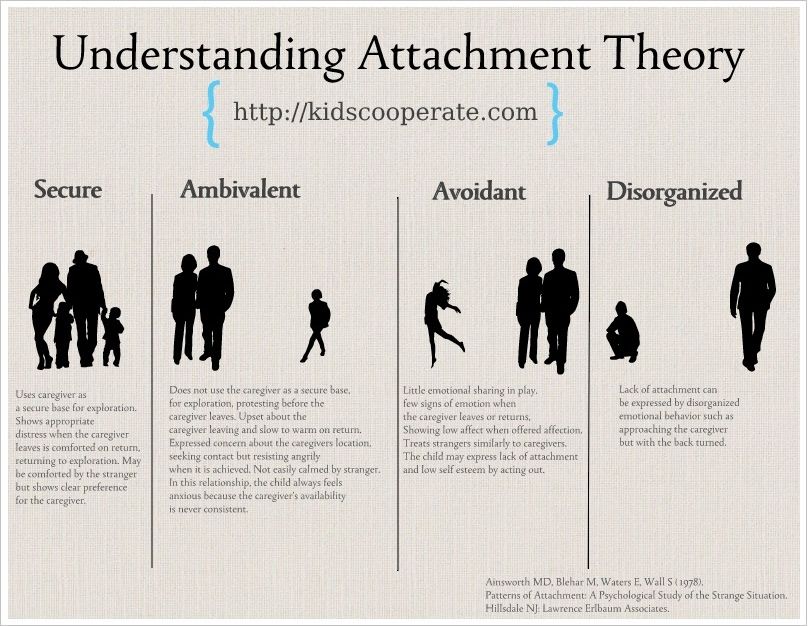 With unfamiliar people, things are quite different.
With unfamiliar people, things are quite different.
Stand opposite each other at a comfortable distance (usually 1-2 meters is sufficient). When performing the exercise, you need to stay in place, while your friend will slowly reduce the distance. One step towards you every 30 seconds: the interval is needed so that you have time to evaluate your feelings.
Try to fix at what distance you started feeling slight discomfort. And when did you tighten up a little more? When did you want to run away, move away or push a person away? All these sensations are signals from your body, which is trying to warn against danger. Remember what distance is comfortable for you, and next time stop any attempts of people to invade your personal space.
Visualization of the border
The exercise will help you identify the borders, understand your attitude towards them and change it. To begin, close your eyes, imagine a limitless field and yourself, define your place in that space, and then build imaginary boundaries around it.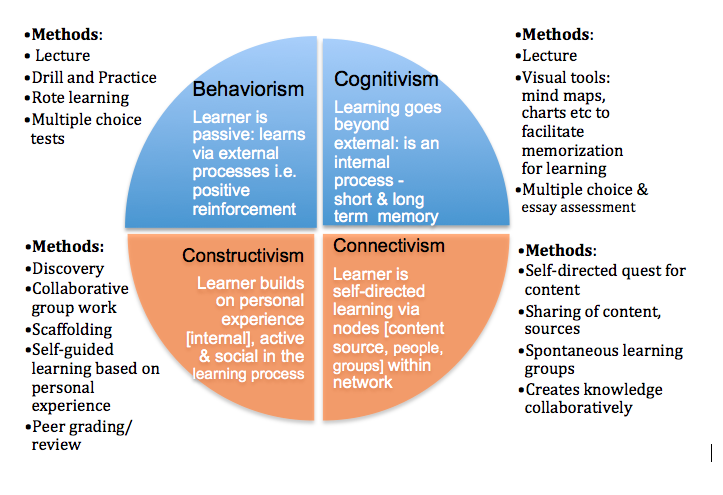 How do they look? What material are they made of, are there doors, windows? Do you feel calm - or, on the contrary, feel anxiety, loneliness? If the borders in your mind are more of a negative connotation, try to think of them differently - for example, in the form of a beautiful hedge instead of barbed wire.
How do they look? What material are they made of, are there doors, windows? Do you feel calm - or, on the contrary, feel anxiety, loneliness? If the borders in your mind are more of a negative connotation, try to think of them differently - for example, in the form of a beautiful hedge instead of barbed wire.
Now imagine your family, friends, colleagues and acquaintances and place them around you. Perhaps someone will be outside the borders, and someone will be right next to you. What do you feel now? Are you comfortable communicating with people outside your borders? Write down or draw what you feel.
Discussion table
Do you know situations when it is impossible to agree with yourself? One part cries capriciously: “I want to go to the sea”, the other says: “Now is not the best time”, and the third is just waiting for all this to stop. The exercise will help you resolve such situations, put everything in its place and come to terms with yourself.
Imagine that your three states—Child, Parent, and Adult—are sitting at a table with a problem in the center that needs to be solved. Each of your ego states reacts to this problem in its own way: the Child expresses emotions, the Parent judges whether he is doing the right thing or not, and the Adult, listening to everyone, makes the final decision. Think of any problem that bothered you last week and try to focus on it. What did you feel? How did they react? Maybe they forbade themselves something? How did you behave? Or how would you behave now, having sorted out the problem?
Each of your ego states reacts to this problem in its own way: the Child expresses emotions, the Parent judges whether he is doing the right thing or not, and the Adult, listening to everyone, makes the final decision. Think of any problem that bothered you last week and try to focus on it. What did you feel? How did they react? Maybe they forbade themselves something? How did you behave? Or how would you behave now, having sorted out the problem?
By answering these questions from different angles, you will let each of your "I" speak out, give them the right to be heard and be able to sensibly assess the situation, which means you will learn to adequately determine the boundaries of what is acceptable.
Defining and defending personal boundaries
Sleep
In a state of chronic fatigue, people are prone to impulsive and reckless actions, and the voice of the Adult due to lack of sleep sounds as if from afar and cannot always be heard. A person needs a healthy, sound and restful sleep. If already in the morning you feel tired, continue to experience stress, as if you had not rested, and your mood is below average, you need to make every possible effort to improve the situation.
If already in the morning you feel tired, continue to experience stress, as if you had not rested, and your mood is below average, you need to make every possible effort to improve the situation.
To normalize sleep, make a plan of actions that must be completed before going to bed, and stick to it. For example, at 21:00 - go to the shower, at 21:30 - start the dishwasher, at 22:00 - go to bed, at 22:30 - fall asleep.
Repeated activities will turn the process of falling asleep into a useful ritual, however, in addition to your personal plan, you need to create rules for others. For example, forbid children to enter your bedroom after 21:00. Create comfortable conditions for yourself first of all - at the same time practice in defending the boundaries (especially with loved ones, because, as practice shows, it is they who most often unknowingly violate personal comfort).
Sports
Some people tend to exhaust their body during sports, which leads to breakdowns, illnesses and emotional burnout.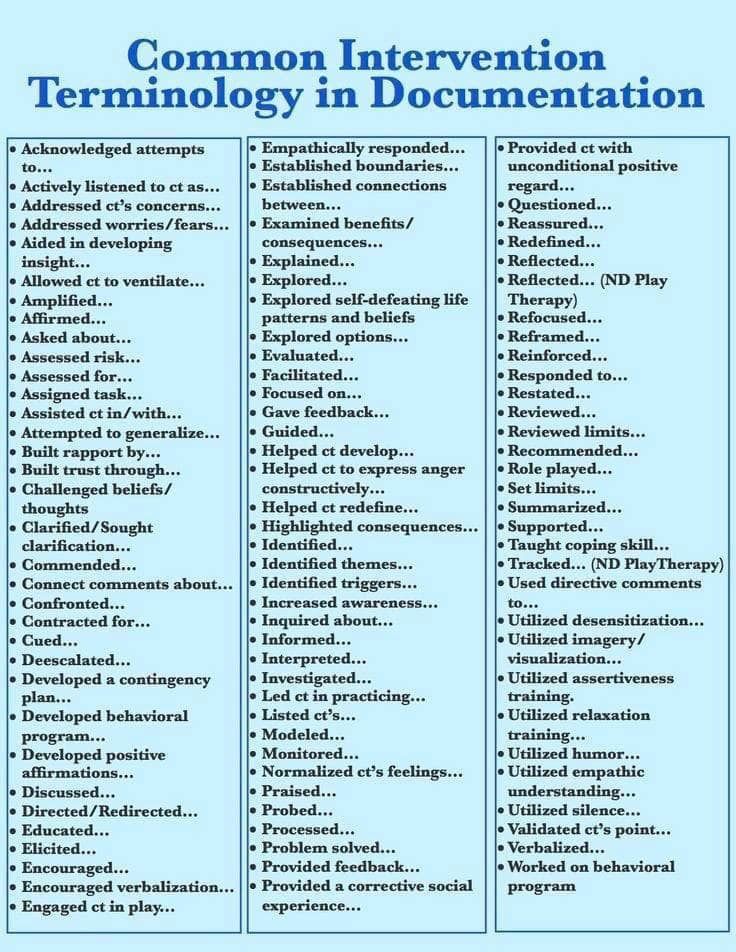 And all because, in addition to internal personal boundaries, people also have physical boundaries, which you also need to learn to feel in order to better understand when it's time to stop. Of course, regular sports are needed, they will help you better understand your body and feel its capabilities, but everything is good in moderation.
And all because, in addition to internal personal boundaries, people also have physical boundaries, which you also need to learn to feel in order to better understand when it's time to stop. Of course, regular sports are needed, they will help you better understand your body and feel its capabilities, but everything is good in moderation.
You don't have to wear yourself out trying to set world records - get into the habit of light fitness or intense exercise in the morning, and this will be enough. Just remember, whatever you do, it's important to watch what your body is saying and help it. That is, give a rest if you are tired, or, conversely, load more if you feel a lack of activity or you need to relieve stress.
Bad habits
No matter what bad habits you have, you need to learn to set healthy personal boundaries around them. But be gradual, you don't have to give up everything at once. Slowly reduce the number of times you go into the habit until you feel you can do without it. After all, it is you who should manage your habits, and not vice versa.
After all, it is you who should manage your habits, and not vice versa.
Remember that every time you give in, you are indulging one of your personalities, whose voice is now especially loud. So she tries to notify you that you are missing something very much. For example, the reason for cravings for alcohol may be the feeling of looseness and relaxation that a glass of wine gives. So wouldn’t it be better to just relax more often, instead of a glass of red wine, to devote time to yourself and your hobbies?
Communicating with people
In dealing with others, the easiest way to defend personal boundaries is when you feel them well and are confident in their benefits. But at first, of course, this is not easy to do. At first, you will have to regularly, time after time, carefully and politely inform (if appropriate) others about what you like and what you don’t. Most people, most likely, will not go where they will not be greeted hospitably - you will make this discovery as soon as you begin to clearly express your position and interests.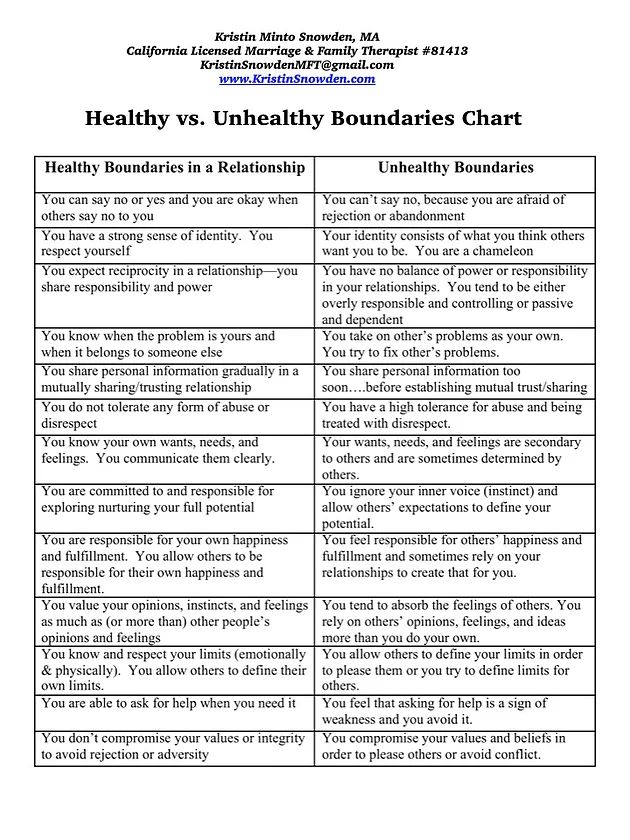 Just do not forget that in any situation it is important to refrain from aggression and harsh reactions, so take all your ambiguous feelings and problems to the internal discussion table in order to make an informed decision before you start acting or reacting recklessly.
Just do not forget that in any situation it is important to refrain from aggression and harsh reactions, so take all your ambiguous feelings and problems to the internal discussion table in order to make an informed decision before you start acting or reacting recklessly.
Also, be prepared for the fact that, while defending personal boundaries, you are likely to stumble upon the discontent of some of those around you. And that's not bad: what's the point of keeping a person nearby if he is not ready to respect your decisions and requests?
Social networks
Previously, communication between people took place mainly in real life, now - in social networks and instant messengers. However, despite this, the same communication norms and rules apply online. An unpleasant “bonus” is that, due to a certain level of understatement in social networks, the likelihood of offending or angering the interlocutor increases significantly. Therefore, it is definitely not worth underestimating the value of virtual communication and talking as if there is not a living person on the other side of the screen, but a faceless text.


